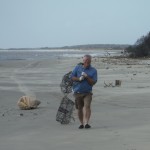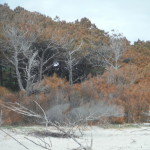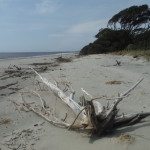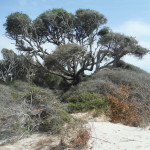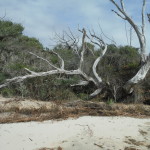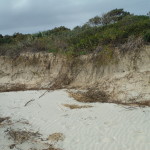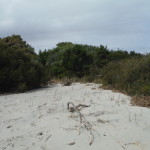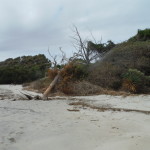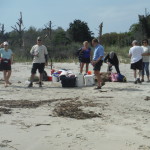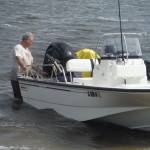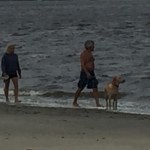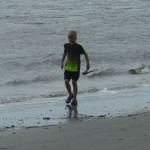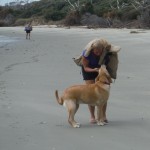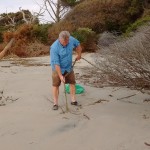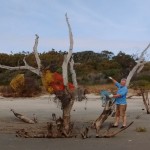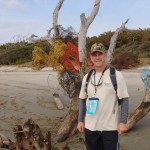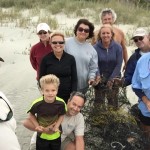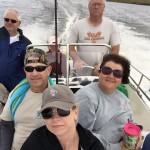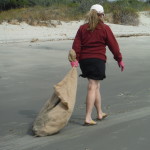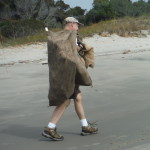On Saturday, October 24, 2015, Wounded Nature-Working Veterans staged a cleanup on Cedar Island and assessed the impact of the flooding on this wildlife refuge. This is an area we are familiar with. Last year we removed 82 crab traps that, over the years, had washed up and partially buried themselves on this coastline. During our 2014 visit, we noticed a line of trash and debris running along the tops of the dunes at the high tide line. So we decided to go back and address the trash and debris problem. Between the time that we decided to address the problem and the time we actually made it back, South Carolina suffered a 100-year flood. The flood has had a big impact on this wildlife refuge.
Here is what we discovered during this cleanup:
Old trash and new trash – The old coastal trash that had accumulated on the high tide line has been washed inland. However new trash that was washed down the river has already started accumulating along the high tide line. The old trash now resides in an area between the high tide line and about 200 yards into the brush and trees. Unfortunately, it looks like this inland trash will remain in this refuge until the end of time. We have so many coastal areas needing our attention that we cannot use our very limited resources to clean up the inland areas.
Crab traps – On this trip, we found about 30 crab traps that had been washed up on the beach. This brings our total crab trap recovery in this area to over 100 traps. There are a number of common elements to these washed traps. None of the recovered traps have ever contained a creature inside, the reason is, once trapped the crabs, fish, baby sea turtles and anything else entering these traps will drown, starve, or dry out and die once the trap becomes detached from its mooring and washes ashore. Once dead, the ghost crabs and raccoons are very efficient at removing and consuming the contents of a washed-up crab trap. Also, none of the recovered traps have ever had any identifiers on them or a roped marker attached. It is not just old traps that are breaking loose from their mooring and washing up, many of these traps are fairly new. The traps we collected yesterday will be given to the South Carolina DNR for reuse.
Flood waters – The floods eroded the dunes in some areas and washed a lot of sand and saltwater inland in other areas. Where the saltwater moved inland and stayed for several days it killed a number of pine trees and evergreen shrubs (some photos at the bottom of this page).
Mosquitoes – They were waiting for us in droves on this trip. All of the capless bottles and empty cans that contained water serve as mosquito breeding containers. Yesterday we were able to kill off an enormous amount of mosquito larvae just by collecting all of the empty and lidless containers. Trash severely upsets the balance of nature when it comes to mosquito populations. During a dry spell when mosquito populations should be dropping in an area, if trash litters the area you have thousands of small breeding pools allowing their populations to continue increasing.
Remaining trash – On every trip we are limited by time and tides as to when and how we can conduct a cleanup. We face further restrictions due to limited funds, equipment, and number of participating boaters. On every cleanup, we are forced to leave trash and debris behind. In spite of these limitations, we are making a real difference. Most of these problems and areas would never have been cleaned up had it not been for the fantastic, hard-working, and very durable volunteers.
